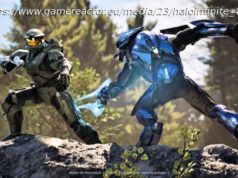Game makers from Blizzard, Riot, Gas Powered Games, and more cast themselves back to the strange, hazy days of the late ’90s to talk about how StarCra
The original StarCraft was a phenomenon, a game that changed the real-time strategy landscape in startling ways and whose influence would ripple out across a huge number of other genres and formats.
Released 20 years ago this month as the science fiction successor to Blizzard’s own breakout real-time strategy kingmaker, Warcraft, StarCraft did more than take a successful format to a different setting.
Instead, it was a generation-defining title, and the game responsible for much of what we consider modern esports. But during development, the game’s fate was uncertain; development happened at a haphazard pace, and use of the Warcraft II engine early on earned the project a dubious nickname among some members of the press: “Orcs in Space.”
Of course, the game went on to become much more than that. To mark the passing of StarCraft’s 20th birthday, Gamasutra reached out to a number of the people who built this seminal work and those whose lives were affected by it to get a sense of the game’s enduring legacy.
“In late 1995, a small group of developers, led by Bob Fitch, were working on a new game to be called ‘Shattered Nations,’” StarCraft’s senior programmer, Collin Murray, told us. “We had been working on it for about 6 months, when Bob and I were approached by Allen Adham with the opportunity to work on a proposed sci-fi RTS game that sounded exciting. We decided to proceed, and work on StarCraft began in earnest.”
Blizzard was understandably keen to follow up on Warcraft’s runaway success, but the team wanted a diversion from the sort of work they’d been doing for years.
“Work on StarCraft began off the heels of the success of Warcraft II: Tides of Darkness and its expansion pack, Through the Dark Portal,” says Chris Sigaty, an executive producer at Blizzard who was lead tester on StarCraft.
“Going back to the original Warcraft: Orcs & Humans, the dev team had already spent a number of years working on strategy games in a high fantasy setting. I was very excited for StarCraft because I was such a huge Star Wars fan growing up and the StarCraft characters and setting represented our own science fiction playground. While we all love the Warcraft setting, moving from fantasy to sci-fi was an exciting change for many of us in the company at that time.”
While the original design hewed quite closely to the template established by the Warcraft franchise, a public showing demonstrated to the team that a new direction was called for if Blizzard wanted StarCraft to truly shine.
An early look at the game that became StarCraft, circa E3 ’96, where it earned the nickname ‘Orcs in Space’
“The most notable change was from the Warcraft II style to a more 3D rendered sci-fi look that took place after E3 in 1996,” Murray says.
“Our original design mimicked the art style of Warcraft II, and was quickly tagged in the press with the nickname ‘Orcs in Space’, which was a less than flattering moniker. Seeing all the other new games being demoed at E3 that year made us realize that our sci-fi game needed a 3D rendered look to feel right. After the show, we refocused and completely redid all the art in 3D, which our artists would render into sprites and touch up by hand.”
A prototype of what became StarCraft, after the engine was rewritten and the art was redone
For Sigaty, it was a turning point in StarCraft’s development. “Rather than being offended or distraught, the team took the feedback in stride and effectively gained strength from it. I was so impressed with the developers’ grit and determination. The engine was completely rewritten and the ambitions for the project were reset to something much grander. From my perspective a big portion of the ‘commit to quality’ core value we have today as a company was forged through this experience.”
After years of hard work and a major redesign, StarCraft launched to an eager public. The pivot in development seemed to pay off in spades, as the game found tremendous critical and popular success, becoming the best selling PC game of 1998 and going on to move over 9.5 million copies across its lifetime.
Notably, StarCraft was also instrumental in growing Blizzard’s Battle.net multiplayer service, which expanded more than 800 percent following the game’s release. It was a significant achievement, and inspired more than one young developer, including Uber Entertainment’s Jeremy Ables, an associate producer on Supreme Commander and producer on Forged Alliance at Gas Powered Games.
“My group of friends were big fans of Warcraft 2 and I ended up playing StarCraft the first time at a friend’s LAN party,” Ables says. “Bought it after that and played through the campaign, which blew me away with the 3 factions and how differently they played. We were playing a lot of Total Annihilation at the time, so this was a great change of pace as it allowed us to choose between the mass unit swarms of TA and the more tactical decisions of StarCraft. Also cool that the folks who just swore by TA had Zerg to play and get at least something they felt familiar with on it. Made it easier to get the groups to play together.”
For Ables, the key to StarCraft’s success was the exquisite balance between three asymmetrical factions: the cold steel and deadly firearms of the Terrans, the high technology and graceful energy weapons of the Protoss, and the overwhelming swarms of the Zerg hive.
It’s a refrain you hear a lot when you talk about StarCraft and what established it as a blueprint for everything that followed. Jesús Arribas of Numantian Games, director and lead designer of They Are Billions, talks about how the factions were a key differentiator between StarCraft and Blizzard’s previous work.
“I got to play StarCraft quite late. My first RTS was Warcraft 2 and I really enjoyed it and let me wanting more. I found playing StarCraft was a much more rewarding experience. In Warcraft, both of the factions were quite similar, the differences were so subtle that I found myself using the same strategies when playing either faction. In StarCraft, by contrast, Blizzard managed to create three really unique factions with their own aesthetics, play style, story and personality.”
His thoughts are echoed by Chris Hopper, the head of North American esports at Riot Games. Hopper was an established RTS fan who was drawn by StarCraft’s sci-fi setting and by the possibilities presented by a third playable race, which he says Blizzard executed masterfully.
According to Hopper “it made RTS non-binary; previous to that, most games either felt like there weren’t substantive differences between the races you played (Age of Empires, for example) or there were only two options (Warcraft). By introducing the third race, it became an exponentially more complicated decision to determine what race/army/build would be optimal in any given situation.”
Of course, a third playable option was a big step for the development team, and one that required a tremendous amount of careful balancing.
“One of the things that I think made StarCraft different from other games at the time was the fact that the 3 playable races all had such distinctly different strategies, yet all had a sort of “rock-paper-scissors” counter for one another’s abilities,” says Murray. “This was a significant challenge to balance. We spent a lot of time playing the game to get it right.”
“StarCraft was one of the first strategy games that featured three asymmetric factions and still came out balanced,” Sigaty chimes in.
“RTS was a growing genre in the PC gaming space back in those days, but back then most games featured factions that had more of a mirrored symmetry to each other. We were very proud of the fact that StarCraft had three races that both built and fought completely differently to one another. Designing the three asymmetric races leveled up our balance chops considerably. We weren’t sure that asymmetric factions would work, but through a lot of experimentation, feedback, and learning, it ultimately did. I believe this was critical to our long-term confidence as developers, giving us more self-assurance to tackle larger, more complex games and designs as we moved forward.”
While StarCraft has been lauded, rightfully so, for its sprawling, epic science fiction narrative and its important contribution to making online real time strategy a viable concept, the consensus seems to be that its biggest contribution was in gameplay, in its three deftly balanced factions. But it also had a wider impact on the state of competitive gaming, and shaped the future of esports in a number of critical ways (evidenced in part by the fact that, of the 9.5 million copies StarCraft eventually sold, 4.5 million of them were in South Korea).
Hopper, who helps oversee one of the world’s largest current esports, League of Legends, says it’s difficult to imagine the scene without StarCraft grandfathering it.






